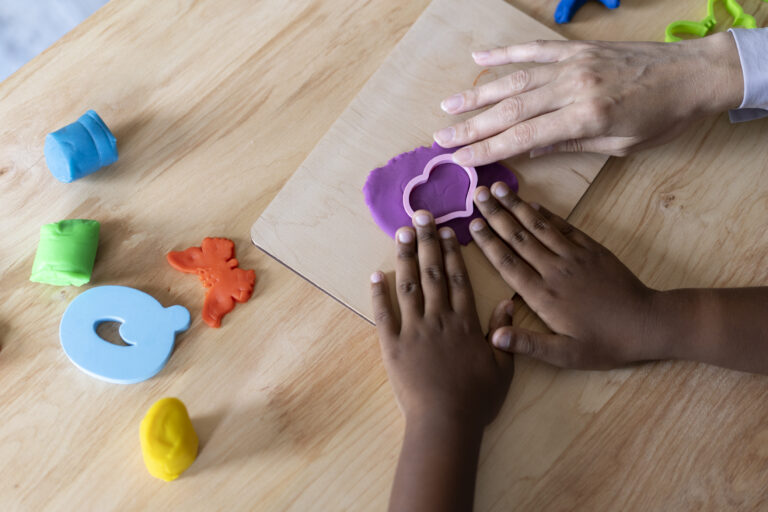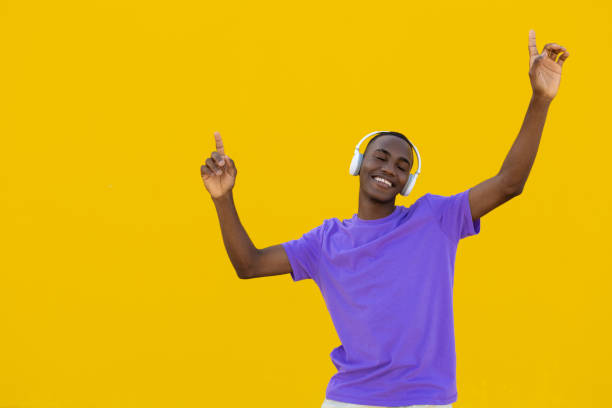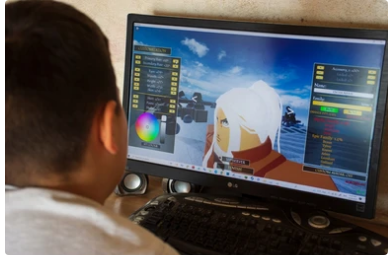25 Best Mental Health Games and Activities for Students In 2023
Mental health is important to everyone who needs to be productive in their career or life. What do you do to maintain the health of your mind? You exercise and eat properly to keep your body in shape, prioritize sleep to keep your immune system strong, and drink lots of water to stay hydrated. There are lots of mental health games and activities for students who are not mentally sound.
Talking about mental health is like talking about life. Because when an individual loses his or her sanity, life becomes miserable. In that light, we’ll discuss some mental health games and activities for students in 2023.
The greatest way to prevent problems like memory loss and cognitive decline as we age is to take proactive measures to maintain our brains healthy.
It’s vital to talk about mental health, but doing so can occasionally be awkward.
Despite this, raising public awareness of mental health is essential since it can have a lot of beneficial effects.
For instance, a study looking at a British anti-stigma campaign discovered that those who were more familiar with it were more likely to feel comfortable telling family, friends, or an employer about their mental health issues and were also more likely to seek professional help (Henderson et al., 2017).
Fortunately, whether one is an introvert, an extrovert, or somewhere in between, there are many different ways to learn about mental health issues.
Most people are unaware of the fact that as we become older, our brains get smaller. As we age, the human brain starts to lose neurons and shrink.
This brain remodeling over time may, at best, result in a sense of mental drowsiness and, at worst, in dementia and memory loss.
Fortunately, a decreasing mind does not necessarily follow from age, even though it is inevitable.
Even though it’s true that your brain changes as you get older, you can exercise your brain, just as you would any other muscle, using a variety of specially created games and exercises to keep it sharp.
What is Mental Health?
Mental health refers to a person’s emotional, psychological, and social well-being. It affects how individuals think, feel, and act, and influences their ability to handle stress, relate to others, and make choices.
Mental health is important at every stage of life and impacts various aspects of a person’s daily functioning.
There are various mental health disorders that individuals may experience.
Some common examples include depression, anxiety disorders (such as generalized anxiety disorder or panic disorder), bipolar disorder, schizophrenia, post-traumatic stress disorder (PTSD), obsessive-compulsive disorder (OCD), and eating disorders.
Why is Mental Health a Priority?
Your mental health may be something you claim to be a priority, but is it really? Keep a log of your daily routine for a week. Review your week once it is finished to determine how frequently self-care is incorporated into your everyday activities.
There are ways to prioritize your mental health regardless of how frequently, infrequently, or not at all you practice self-care. Several recommendations are:
Spend time in nature: Spending time in nature might help you unwind by getting you away from your home or office.
Spend time having fun, giving to others, or attempting new things to find meaning in your life. Find activities that mean significance to you, whether you volunteer, hike, or go on adventures.
Sleep: Depression, worry, and anxiety are examples of emotions that might interfere with your sleep. Because they force you to concentrate on the relationship between your mind and body, activities like yoga or breathwork might aid in reducing unfavorable thoughts or feelings.
Physical activity: Exercise is a crucial component of self-care. It can make you happy and provide you time for your mind to roam, think, or even heal.
Spend time with your animal: Pets give unconditional love and have therapeutic benefits. Take time to pet, play, or exercise with your pet.
Your complete well-being depends on giving your mental health the attention it deserves. Also, your mental well-being affects your body, mind, and spirit.
Your relationships and physical health will suffer if you can’t look out for yourself. Making oneself a priority might be challenging at times.
25 Mental Health Games and Activities for Students In 2023

Just as we have seen how important mental health is and the prioritization, we will see the list of some mental health games and activities for students to participate in.
Do any of the listed activities and possibly try all so as to be sound in the mind.
Here’s a list of 25 mental health games and activities for students in 2023, along with a brief explanation of each:
1. Mood Meter
The Mood Meter is a tool created to assist us in developing strategies for regulating (or managing) our emotions and for learning to perceive them in ourselves and others with increasing subtlety.
It gives us a “language” to express our emotions.
Students can use a mood meter to identify and track their emotions throughout the day, helping them become more aware of their mental state.
2. Gratitude Journal
Gratitude journaling is the habit of recording and reflecting on things (typically three) that you are grateful for on a regular basis.
Encourage students to write down things they are grateful for each day, fostering a positive mindset and appreciation for the good things in life.
When they learn how to write down their memories, they tend to have a good moment always when they reflect on them.
3. Mindful Coloring
Mindful coloring is a form of art therapy that involves coloring intricate designs or patterns with focused attention and an intentional, non-judgmental attitude.
It combines the benefits of mindfulness, which is the practice of being fully present at the moment, with the soothing and creative aspects of coloring
Provide coloring sheets or books with intricate patterns for students to color mindfully, promoting relaxation and focus.
4. Thought Bubbles
In this activity, students write down their negative thoughts on paper and burst them like bubbles, symbolizing letting go of negative thinking patterns.
5. Emotion Charades
Emotion charades are a game or activity in which participants act out or mime different emotions without using words or sounds, and others try to guess the emotion being portrayed.
It is a fun and interactive way to explore and express emotions non-verbally, encouraging empathy, emotional recognition, and communication skills.
Students act out various emotions without speaking, and others guess the emotion, encouraging emotional recognition and empathy.
6. Breathing Exercises
Breathing exercises are techniques that focus on conscious control and manipulation of your breath. They can be used as a powerful tool for relaxation, stress reduction, and overall well-being.
Teach students different breathing techniques, such as deep breathing or box breathing, to help them manage stress and anxiety.
7. Self-Care Bingo
Self-Care Bingo is a fun and interactive way to encourage and track various self-care activities. It involves creating a bingo grid with different self-care tasks or activities in each square.
The goal is to complete the activities and mark them off as you go, aiming to achieve a horizontal, vertical, or diagonal line of completed squares (similar to traditional bingo).
Create a bingo card with self-care activities, such as taking a bath, going for a walk, or reading a book, and encourage students to complete a row or column.
8. Feelings Image Collage
Creating a feelings image collage is a visual and artistic way to explore and express your emotions. It involves collecting or creating images that represent various feelings and arranging them in a collage format.
Students cut out images from magazines or draw pictures that represent their emotions and create a collage, providing a creative outlet for self-expression.
9. Mindfulness Walk
Take students outside for a mindful walk, encouraging them to observe and appreciate their surroundings, bringing them into the present moment.
10. Positive Affirmations
Positive affirmations are powerful statements that are used to challenge and overcome negative thoughts and beliefs, promote self-confidence, and cultivate a positive mindset.
They are often repeated or written down to reinforce positive self-talk and encourage a more optimistic outlook.
Have students create and repeat positive affirmations to boost their self-esteem and counter negative self-talk.
11. Personalized Stress Balls
Students can make their own stress balls using balloons and filling them with materials like flour or rice, providing a sensory tool for stress relief.
12. Guided Meditation
Use guided meditation audio or videos to lead students through a calming and relaxing meditation session, helping them develop mindfulness skills.
13. Emotion Sorting
Provide a set of emotion cards and have students sort them into different categories, facilitating emotional awareness and recognition.
14. Puzzle Therapy
Puzzle therapy, also known as puzzle-based therapy or puzzle-solving therapy, is a therapeutic approach that utilizes puzzles as a tool for mental stimulation, relaxation, and cognitive training. Puzzles, such as jigsaw puzzles, crosswords, Sudoku, or brain teasers, are used to engage the mind and provide various benefits.
Engage students in solving puzzles, such as jigsaw puzzles or crosswords, to promote concentration, problem-solving, and stress reduction.
15. Relaxation Music/Music therapy
Play soothing background music during study or relaxation periods to create a calming atmosphere and reduce anxiety.
Music therapy is a therapeutic approach that uses music and musical interventions to address the physical, emotional, cognitive, and social needs of individuals.
Trained music therapists use various music-based techniques to promote healing, improve well-being, and enhance the quality of life.
16. Feelings Wheel
Use a feelings wheel to help students identify and articulate their emotions, fostering emotional intelligence and self-awareness.
17. Body Scan
Guide students through a body scan exercise where they focus on each part of their body, noticing sensations and promoting relaxation.
18. Play-Doh Therapy
Provide Play-Doh or clay for students to knead and shape, which can serve as a stress-relieving and grounding activity.
19. Positive Peer Recognition
Encourage students to write anonymous positive notes or compliments for their peers, promoting a supportive and inclusive classroom environment.
20. Storytelling Circle
A storytelling circle is a gathering or activity where participants come together to share and listen to stories.
It provides a space for individuals to express their creativity, share personal experiences, and connect with others through the power of storytelling.
Create a safe space where students can share personal stories or experiences, fostering empathy, understanding, and connection among peers.
21. Time Capsule
A time capsule is a container or vessel that is filled with objects, letters, photographs, or other items that represent a particular period of time.
It is typically buried or hidden with the intention of being opened and revealed at a designated future date.
Time capsules serve as a way to preserve memories and provide a glimpse into the past for future generations.
Have students create a time capsule with positive memories, affirmations, and goals, which they can revisit during challenging times for motivation and encouragement.
22. Stress-Free Zone
This is a place where there is absolute serenity and a refreshing atmosphere.
Designate a specific area in the classroom as a stress-free zone, equipped with cozy pillows, calming activities, and sensory items for students to use when needed.
23. Random Acts of Kindness
Random acts of kindness are selfless and unexpected acts done to bring joy, support, or assistance to others without any expectation of reciprocity.
These acts can be simple or elaborate, and they aim to create positive experiences and make a difference in someone’s day.
Encourage students to perform random acts of kindness for others, such as writing uplifting notes or helping someone in need, fostering empathy and positive behavior.
24. Mindful Eating
Mindful eating is a practice that involves paying full attention to the experience of eating, focusing on the sensory aspects of food, and being fully present at the moment.
It encourages a non-judgmental awareness of your thoughts, feelings, and physical sensations related to eating.
Teach students to eat mindfully by focusing on the taste, texture, and sensations of their food, promoting health, eating habits, and self-awareness.
25. Positive Reflections
Positive reflections involve consciously focusing on and acknowledging positive aspects of yourself, your life, or your experiences.
They serve as a way to cultivate gratitude, boost self-esteem, and promote a positive mindset.
Set aside time for students to reflect on their accomplishments and positive experiences, reinforcing a growth mindset and boosting self-confidence.
Conclusion
When we are on the lookout for mental health games and activities for Students, the 25 listed above will definitely serve that purpose well.
Menthol health is a top priority in anyone’s life today. If an individual is not mentally okay, his reasoning begins to vary.
However, these mental health games and activities aim to support students’ mental health, promote emotional well-being, and develop important coping skills in an engaging and interactive manner.






